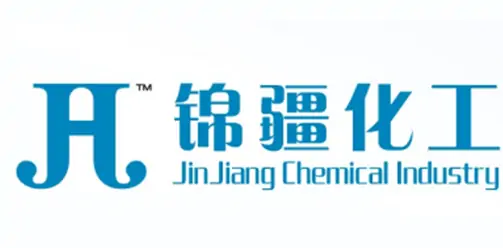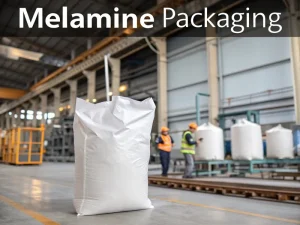
High Pressure Nelamine Use For Melamine Tableware Advantage
Tech Blog High Pressure melamine Use For Melamine Tableware Melamine tableware has become a staple for households, restaurants, and catering services worldwide due to its


Among the numerous chemicals that support global agricultural production and drive modern industrial development, urea undoubtedly occupies a central position. As an organic compound, it exhibits unparalleled advantages with its unique chemical properties and wide range of applications. Whether as a key fertilizer to feed billions of people worldwide or as a fundamental raw material for various industrial products, the value of urea is immeasurable. This article will delve into the significant advantages of urea and explain why it has become the most widely used choice globally.
The most prominent and core advantages of urea is its extremely high nitrogen content. Urea contains 46% nitrogen, which is the highest concentration among all solid nitrogen fertilizers. The direct urea agricultural benefits brought by this feature are:
Cost effectiveness of large-scale agriculture: Compared to other fertilizers, farmers require less urea to provide the same amount of nitrogen (e.g., ammonium nitrate with a nitrogen content of 33-34% or ammonium sulfate with a nitrogen content of 21%). Choosing urea means obtaining the key nitrogen elements needed for crop growth with less investment, which is crucial for optimizing agricultural budgets and increasing planting profits. This excellent cost-effectiveness is the decisive factor for the large-scale adoption of urea worldwide.
Effective for crop growth: Nitrogen is crucial for plant growth, supporting leaf development, protein synthesis, and yield. Once the nitrogen in urea is converted into ammonium by soil bacteria, it is easily absorbed by crops such as wheat, corn, rice, and fruits. If appropriately used, yield can be increased by 10-30%.
Unlike many fertilizers, urea has logistics and store advantages:
Non-explosive and stable: Unlike ammonium nitrate (a potential explosive), urea is chemically stable, making its storage, transportation, and handling safer. This reduces regulatory barriers and insurance costs for farmers and distributors.
Low moisture absorption: Although urea can absorb moisture under humid conditions, modern formulations (such as coated urea) can minimize clumping, ensuring it remains free flowing and easy to apply with standard equipment.
Long shelf life: When stored in dry and cool conditions, urea can maintain its effectiveness for many years, unlike organic fertilizers that degrade rapidly.
Unlike physiologically acidic fertilizers such as ammonium sulfate, urea itself is chemically neutral. After being applied to the soil, its transformation process has a relatively small long-term impact on soil pH. This urea advantage makes it suitable for various types of soils, from acidic to alkaline, without worrying about rapid soil acidification like some fertilizers. This broad applicability provides farmers with great flexibility.
The multifunctionality of urea is reflected in its flexible and diverse application methods, which can meet the needs of different crops, growth stages, and cultivation systems:
Solid particle application: can be applied as a base fertilizer to the soil before sowing, or as a topdressing during crop growth.
Application of aqueous solution: Urea has high solubility in water and can be formulated into a liquid fertilizer. It can be applied through an irrigation system (water fertilizer integration) to achieve precise and efficient nutrient delivery.
Foliar spraying: Under specific circumstances, a low-concentration urea solution can be used as a foliar fertilizer, which can be quickly absorbed by crop leaves and correct nitrogen deficiency symptoms.
In addition to agriculture, the chemical properties of urea make it a star in industrial environments:
Emission control: As a diesel exhaust fluid (DEF, such as AdBlue), the key component in diesel engines, urea, can reduce harmful nitrogen oxide (NOx) emissions by up to 90%. When sprayed into the exhaust stream, it is converted into NOx, which is then transformed into harmless nitrogen and water, helping vehicles meet strict global standards (Euro 6, US Environmental Protection Agency Tier 4).
Plastics and resins: Urea reacts with formaldehyde to form urea formaldehyde (UF) resin, which is used for particleboard, plywood, and laminate flooring. These resins have high strength, low cost, and fast curing, making them the backbone of the artificial board industry.
Chemical synthesis: Urea is a precursor of melamine (used as a flame retardant and durable plastic) and cyanuric acid (used as a disinfectant for swimming pools). It also produces mining and construction explosives (urea nitrate) and plays a role as a fixing agent in textile dyeing.
When used responsibly, urea supports sustainable practices:
Reduce carbon footprint: Compared to other nitrogen fertilizers, urea production requires less energy per unit of nitrogen. Innovations such as “green urea” (made from renewable ammonia in green hydrogen) have further reduced emissions, aligning with global decarbonization goals.
Sulfur-free option: Unlike ammonium sulfate, urea (sulfur-free) can avoid excessive acidification for sulfur-sensitive crops or soils.
Precision agriculture compatibility: Urea is used in conjunction with modern agricultural technologies such as irrigation fertilization (through irrigation fertilization) and controlled-release agents to reduce waste and nutrient inflow into waterways.
The advantages of urea lie in its unparalleled high nitrogen content, versatility, and cost-effectiveness. Whether it’s feeding the world’s crops, reducing industrial emissions, or making advanced materials possible, urea is indispensable. With the advancement of technology, its role in sustainable agriculture and green manufacturing will only continue to grow, consolidating its position as a key component in modern society.

Tech Blog High Pressure melamine Use For Melamine Tableware Melamine tableware has become a staple for households, restaurants, and catering services worldwide due to its

Tech Blog Melamine packaging For manufacturers, inaccurate packaging not only fails to meet national standards but also increases labor costs and the risk of product

Tech Blog How to Detect Melamine in Textiles? Melamine powder, a nitrogen-containing heterocyclic compound, is widely used in flame-retardant textiles and plastic products due to

JINGJIANG MELAMINE POWDER
© JINJIANG MELAMINE